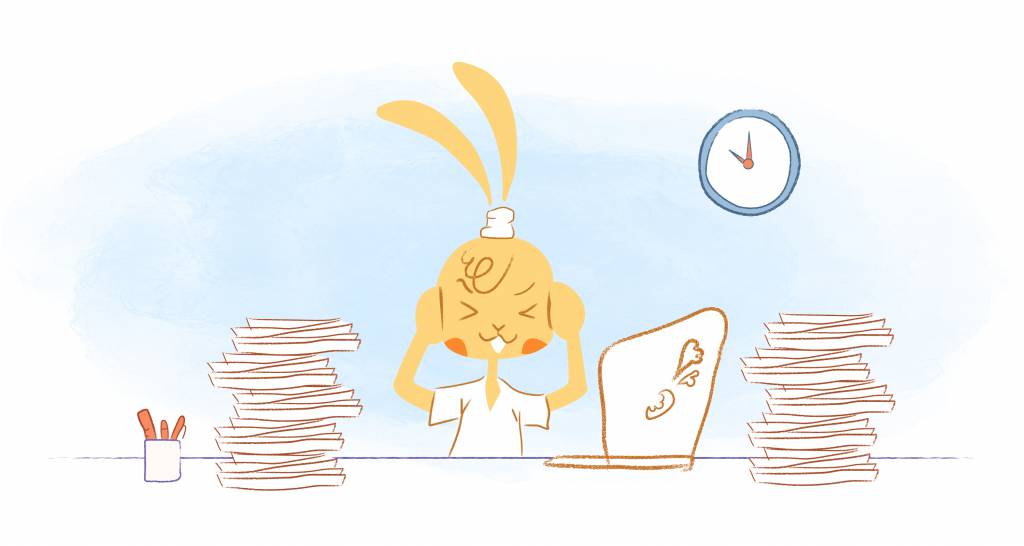

Are you being held back from being productive? For millions of professionals, productivity is an elusive concept that seems out of reach. But for others, efficiency and output are part of the natural ebb and flow of daily life. The question is, what separates people in the latter group from those in the former?
What is Personal Productivity?
Interestingly, the way in which we define personal productivity has evolved over the years. Throughout much of history, productivity and success were highly correlated to how much land you owned. If you had lots of land, it was a sign that you’d worked hard and done well for yourself (or at least that your parents did). If you didn’t own any land, you were viewed as unsuccessful and, indirectly, unproductive.
Then came the Industrial Revolution. During this time period, productivity was defined by time worked. Someone who labored 60 hours a week is assumed that they are being productive more than someone who worked 40 hours per week and so on and so forth. This is the period in which hourly wages were introduced. For the first time ever, time equaled money.
Now we’re in the Age of Information – or whatever title history will eventually give it. In today’s world, productivity is no longer judged by how much time you work. Instead, it’s about how much you can accomplish within a limited time frame. In other words, productivity = output / time. Someone who can produce 60 widgets in two hours is considered to be more productive than the person who can make 50 widgets in three hours.
Why is Personal Productivity so difficult to nail down?
The notion of productivity is fluid. It’s constantly changing and never set in stone. Even today, everyone’s definition of productivity is different. In other words, we’re all looking to accomplish unique objectives within a set of very different circumstantial factors. However, you could also say all productivity is based on the same big picture perspective.
Business strategist Joshua Riddle offers up one of the best definitions. As he explains, “…personal productivity is completing the actions that move you closer to accomplishing your goals in a manner that brings balance and ease into your life.”
Another good definition is that productivity = value/time. In other words, it’s about creating value within whatever time you have. Someone who has 12 hours per day to work a job will be expected to deliver more value than the individual who only has one hour.
4 Constraining Factors Holding People Back from Being Productive
Despite having more resources and opportunities than ever before, research indicates that today’s professionals are less productive – on average – than ever before. Employee productivity is declining; workers are taking more sick days; distractions are harder to overcome; and output per worker has become stagnant. But why?
Ultimately, a lack of productivity can be traced back to one or more common causes – which we’ll call constraints. The more constraints that are present in your daily life, the less likely you are to reach maximum productivity.
Everyone is exposed to different factors, has a unique disposition, and responds differently to various circumstances. But with all that being said, here are some of the most common constraining factors (and how you can overcome them in order to enjoy optimal productivity and efficiency in your daily life):
Procrastination
Millions of people struggle with procrastination on a daily basis. And even though you know it’s a bad thing, you continue to do it day after day. The first key to overcoming procrastination is to understand why you do it.
People tend to procrastinate because it provides a jolt of fleeting pleasure. Whether it’s watching a YouTube video, grabbing something to eat, playing a game, or scrolling through social media, you get immediate results that make you feel good. But ironically, what you’re really doing is trading long-term benefits for temporary pleasure.
A few minutes of scrolling through your Instagram feed might seem like a good idea now, but it ultimately prevents you from leaving work on time, which causes you to get stuck in rush hour traffic, which leads to being late to dinner, which means your spouse is mad at you, your date night is ruined, and you’ll have to spend the next three days working hard to get back in her good graces. (That sounds dramatic, but you need to understand what’s at stake when you procrastinate.)
Procrastination tends to emerge in the following situations:
- You don’t view the task as urgent.
- You don’t know how to start or what comes next.
- You’re afraid of failing.
- You have a history of success when you wait until the last minute.
- You don’t want to do the task.
It’s always helpful to acknowledge the source of your procrastination. Once you know what’s causing it, you can implement targeted strategies to move you from inaction to productivity.
Distractions
Outside of procrastination, distraction is the biggest drain on personal productivity. Each time you switch your attention to another object, task, or endeavor, your concentration takes a hit. You lose ideas and limit your ability to bring your focus back to what you’re supposed to be doing. While easier said than done, the best thing you can do is eliminate distractions at the source.
While there are distractions that you have no control over, most can be counteracted, avoided, or replaced. For example, let’s say a noisy coworker in the adjoining cubicle prevents you from being able to type up your morning reports. Instead of just succumbing to the distraction, you can proactively overcome it. Options include putting in noise cancelling earbuds, speaking to your supervisor and asking to be moved, or using the mornings to work from home.
To better understand which distractions hamper your productivity, grab a notebook and spend an entire day jotting down situations where you become distracted. You’ll discover that one or two distractions are responsible for most of your wasted time. Armed with this information, kill the distraction at the source. (If it’s social media, log out of your accounts. The buzzing of your phone, put it on silent. If it’s coworkers randomly stopping by to chat, shut your office door.
Chronic Pain and Health Issues
Research shows that chronic pain negatively impacts productivity. In particular, it impacts three components of productivity: workdays missed, number of annual hours worked, and hourly wages. In the United States, the value of lost productivity to pain ranges from $299 to $334 billion annually.
There are cases of chronic pain where people exhaust all of their resources trying to find a solution, yet are unable to identify the source. But the irony is that many people don’t take the time to adequately diagnose their pain or deal with the condition they know they have – and there’s no excuse for this.
Common health issues
Let’s take a look at some common health issues and sources of chronic pain and explain how a proactive approach can help you overcome the underlying issue and enjoy being productive on a day-to-day basis.
- Tooth pain. Approximately 91 percent of working age adults have tooth decay and/or related tooth pain. Popping pain pills isn’t the solution. Dental implants may be a better option. All on four implants are especially popular, as they limit the cost of the procedure and the number of drill sites.
- Back pain. The majority of working age adults will, at one point or another, experience lingering back pain. It’s especially common in office jobs where people sit in one position for hours each day. Rather than letting it persist, see a chiropractor and figure out what the cause is (bulging disc, fracture, soft tissue damage, etc.).
- More than half of all adults experience regular headaches during the course of a year. For some of these people, the headaches are chronic (occurring at least 15 days per month for no less than three consecutive months). If you fall into this category, it’s important to understand the type of headache you have – tension, eye strain, migraine, cluster, etc. – and see a specialist to rule out anything serious.
Time Management Issues
Most people don’t know how to manage their time very well. This can look like:
- Doing too much at once and fizzling out before the day is over.
- Not getting enough work done in the morning, which backloads your schedule in the afternoon.
- Not setting goals or objectives.
- Failing to keep a calendar or schedule.
Learning to manage your time efficiently on a daily, weekly, and monthly basis will improve your output and enhance your ability to maximize productivity.
Make the Most Out of What You Have
We all have our own strengths, weaknesses, and circumstances. Some people have a proclivity for being able to block out distractions and hone in on a single task for a long chunk of time. Others have a diagnosis of ADHD, which makes it challenging to focus for extended periods. Some folks work from home in a private office with limited distractions nearby. Others work in the middle of an open floor plan where the conversations of noisy coworkers echo throughout the office space. The key is to make the most out of what you have available to you.
By addressing the constraining factors in this article, you can significantly improve being productive. While there’s no scientific evidence to suggest this is true, let’s just assume that you’re able to improve your productivity by 5 percent each time you breakthrough one of these constraints. (It could be slightly more or slightly less, but that’s beside the point.) If that’s true, any investment you make in dealing with these issues will significantly increase your career potential, earnings, and overall success. That’s not a bad return that for a limited investment.











Albert Costill
My name is Albert Costill and I'm a content marketer at Calendar. If I can help people become more productive in my journey, even better. If you ever have a question about your Calendar or how you can use it - - don't hesitate to reach out. I'm a Calendar Pro.